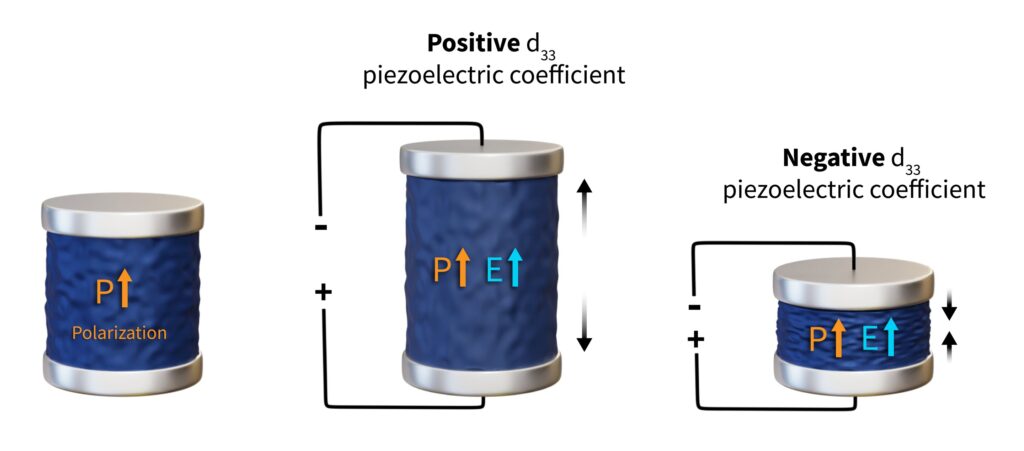Hafnium oxide thin films are a fascinating class of materials with robust ferroelectric properties in the nanometer range. While the ferroelectric behavior is extensively studied, results on piezoelectric effects have so far remained mysterious.
A new study published in the journal Nature Communications now shows that the piezoelectricity in ferroelectric Hf0.5Zr0.5O2 thin films can be dynamically changed by electric field cycling. Another groundbreaking result is a possible occurrence of an intrinsic non-piezoelectric ferroelectric compound. These unconventional features in hafnia offer new options for use in microelectronics and information technology.
Since 2011, it has been known that certain hafnium oxides are ferroelectric; that is, they possess a spontaneous electric polarization whose direction can be switched in the opposite one by applying an external electric field. All ferroelectrics exhibit piezoelectricity and, most often, a positive longitudinal piezoelectric coefficient (d33).
This means that the crystal expands if the applied electric field is in the same direction as the electrical polarization. However, for hafnia, studies have shown contradictory results, with different hafnia films expanding or contracting in the same experimental conditions. Moreover, the ferroelectric polarization can apparently switch against the electrical field, which is called “anomalous” switching.
Unconventional behavior investigated
An international collaboration led by Prof. Dr. Catherine Dubourdieu, HZB, has now elucidated for the first time some aspects of these mysterious results and discovered an unconventional behavior in hafnia. They investigated Hf0.5Zr0.5O2 (HZO) capacitors using piezoresponse force microscopy (PFM): a conductive needle scans the sample surface under a small electrical voltage and measures the local piezoelectric response.
Their study revealed that piezoelectricity in HZO is not an invariable parameter but is a dynamic entity that can be changed in the very same material by an external stimulus such as electrical cycling.
The ferroelectric HZO capacitors undergo a complete uniform inversion of the piezoelectric d33 coefficient sign from positive to negative upon electric field cycling. Every single location of the ferroelectric capacitor undergoes such a change, passing through zero local piezoelectricity upon a suitable number of AC cycles.
New option: Ferroelectric materials without piezoelectricity
Density functional theory calculations suggest that the positive d33 in the initial state is due to a metastable polar orthorhombic phase that gradually evolves, under ac cycling, towards the fully developed stable polar phase with negative d33.
The DFT calculations not only suggest a mechanism for the d33 sign inversion but also predict a groundbreaking result: a possible occurrence of an intrinsic non-piezoelectric ferroelectric compound, which is observed experimentally.
“For the first time, we have been able to experimentally observe a sign inversion of the piezoelectric effect in the whole area of a capacitor in these Hafnia Zirconia ferroelectrics under applied ac electric field,” Dubourdieu states. This discovery has enormous potential for technological applications.
“As the piezoelectricity in these materials can be dynamically changed and even nullified while the polarization remains robust, we see fantastic prospects for developing ferroelectric HfO2-based devices with electromechanical functionalities. Moreover, from a fundamental standpoint, the possibility of a non-piezoelectric ferroelectric compound would revolutionize our vision of ferroelectricity,” says Dubourdieu.


